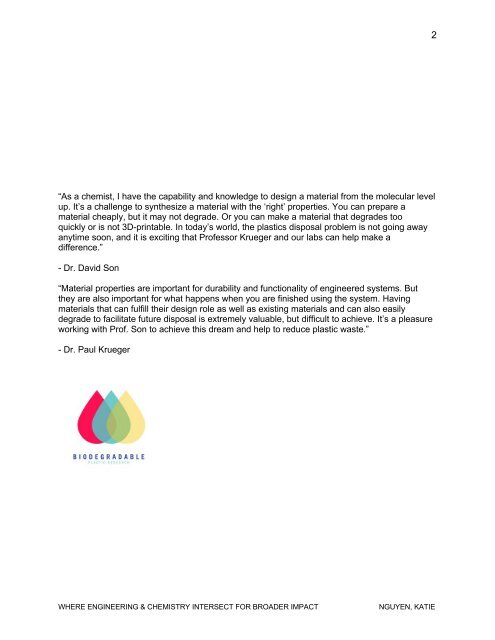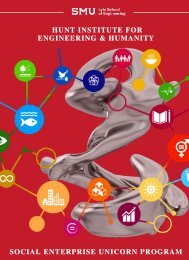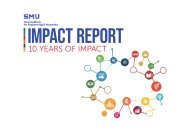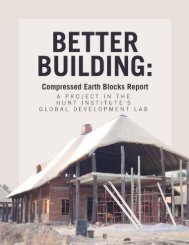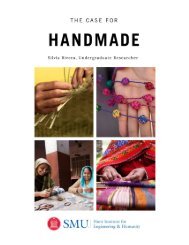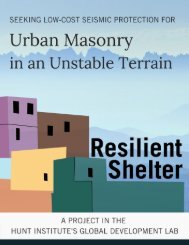Where Engineering & Chemistry Intersect for Broader Impact
Currently, many biodegradable products in the market are bio-based, such as polysaccharides, proteins, and lipids, and are focused on conventional plastic applications. This approach to production of biodegradable plastics, however, is facing mounting challenges due to high cost, weaker performance, and environmental issues. In addition, several biodegradable plastics have proven to break down quickly under specific, simulated environmental conditions, but they may not be effectively degradable under natural conditions. As a result of these challenges and many more, there exists a gap in the market. Our Project Affiliates, Dr. Son and Dr. Krueger, aim to bridge this gap by pursuing a biodegradable plastic that better addresses the aforementioned challenges, investigating a prototype plastic with predictable degradation and mechanical properties. In the spirit of interdisciplinary innovation, they seek to develop a joint chemical and engineering approach to biodegradable plastics for broader impact.
Currently, many biodegradable products in the market are bio-based, such as polysaccharides, proteins, and lipids, and are focused on conventional plastic applications. This approach to production of biodegradable plastics, however, is facing mounting challenges due to high cost, weaker performance, and environmental issues. In addition, several biodegradable plastics have proven to break down quickly under specific, simulated environmental conditions, but they may not be effectively degradable under natural conditions. As a result of these challenges and many more, there exists a gap in the market.
Our Project Affiliates, Dr. Son and Dr. Krueger, aim to bridge this gap by pursuing a biodegradable plastic that better addresses the aforementioned challenges, investigating a prototype plastic with predictable degradation and mechanical properties. In the spirit of interdisciplinary innovation, they seek to develop a joint chemical and engineering approach to biodegradable plastics for broader impact.
Create successful ePaper yourself
Turn your PDF publications into a flip-book with our unique Google optimized e-Paper software.
2<br />
“As a chemist, I have the capability and knowledge to design a material from the molecular level<br />
up. It’s a challenge to synthesize a material with the ‘right’ properties. You can prepare a<br />
material cheaply, but it may not degrade. Or you can make a material that degrades too<br />
quickly or is not 3D-printable. In today’s world, the plastics disposal problem is not going away<br />
anytime soon, and it is exciting that Professor Krueger and our labs can help make a<br />
difference.”<br />
- Dr. David Son<br />
“Material properties are important <strong>for</strong> durability and functionality of engineered systems. But<br />
they are also important <strong>for</strong> what happens when you are finished using the system. Having<br />
materials that can fulfill their design role as well as existing materials and can also easily<br />
degrade to facilitate future disposal is extremely valuable, but difficult to achieve. It’s a pleasure<br />
working with Prof. Son to achieve this dream and help to reduce plastic waste.”<br />
- Dr. Paul Krueger<br />
WHERE ENGINEERING & CHEMISTRY INTERSECT FOR BROADER IMPACT<br />
NGUYEN, KATIE


